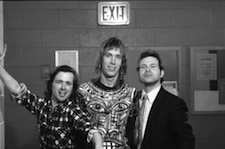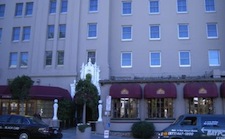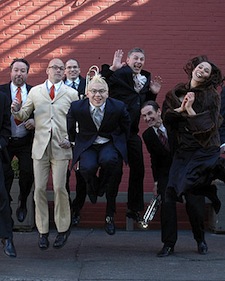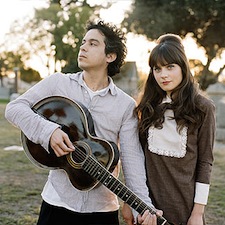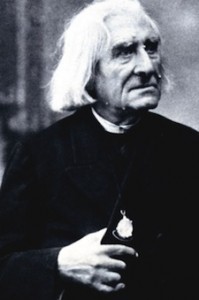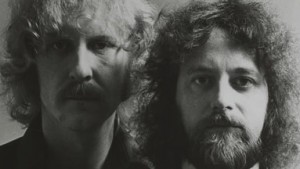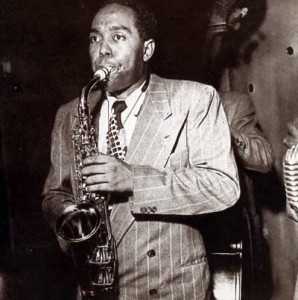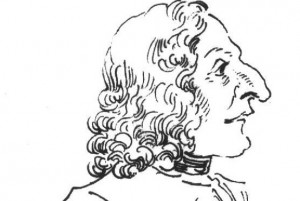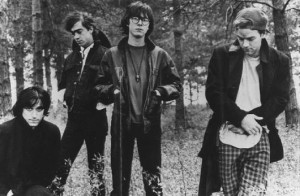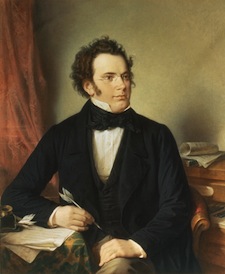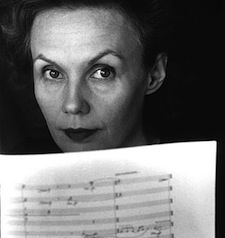“Add It Up’ has got to be one of the best angry young man songs ever written. It is one of the few songs on the first Violent Femmes albums that has Gordon Gano playing some electric guitar, but it is still amazing how loud parts of this song are with just guitar, acoustic bass guitar and a single snare drum. I’m ripping four Violent Femmes CDs tonight, the first album, ‘Hallowed Ground’ (with some of the darkest music I think the Femmes ever made, plus some of the most out there – with some heavy thanks to John Zorn and his Horns of Dilemma), ‘Why Do Birds Sing’ and the ‘Add It Up’ compilation from ’93. I have a couple others in the back shelves of the book cases, but I’ll have to dig for those. The first album is – I really don’t know how to put it – every whiny teenage loser kids album of anthems? It certainly was there for me during my low points. What amazes me is how fun it is to listen to now since it makes me think ‘phew! I’m not there anymore’. And I get the sense that this is probably the case for the band as well. ‘Hallowed Ground’ is a solid album as well, but the Violent Femmes really were one of those bands who did their best and brightest on the first record. (Pink Martini, from last night, I think is also in that camp). And while ‘Blister In The Sun’ gets it’s fair share of radio play on ‘alternative’ stations still, ‘American Music’ from ten years later is really their big hit (though really no where near their best song… just more accessible I guess).
I got to see the Violent Femmes once at the Fillmore in San Francisco, and what a show that was. The group came to the stage THROUGH the middle of the audience playing snare drum, a trombone and a cymbals… hopped on stage and rocked out a great show. I’m still amazed how much these three guys were able to do together as a band (though at this point Victor DeLorenzo had been replaced on drum(s)… what a strange audition that must have been – ‘So, can you play a snare drum?’ ‘Sure’ ‘OK! You’re hired!’). Brian Ritchie played some pretty mean marimbas on ‘Gone Daddy Gone’ and it seemed like all three of them were picking up instruments here and there as needed. They looked like they were having lots of fun (to say the least). And opening that show was Carmaig DeForrest and his ‘Death Groove Love Party’… Carmaig only put out a handful of discs that were probably only available around shows in SF, but they sure were fun. Hmm… may need to rip that one in the next day or two.
There is something poetic though about how I wound up ripping the Violent Femmes tonight. Before bed, Celia came downstairs to pick out tonight’s rips and pulled out a couple of blank CD cases (because they were a pretty red), then she saw the first Violent Femmes record and said ‘Daddy! There’s a little girl on that one!’. So – Violent Femmes it was, because my daughter saw the little girl on the cover. The Violent Femmes – part of the soundtrack to my breakup with Tamiko (which, if it had stuck, would have meant no Celia in this world… WAAAHHHH!!!!). And it’s not like I can put it on for her tomorrow and say ‘Celia – here is the music with the girl on the cover!’… how do I explain ‘Kiss Off’? She’ll recognize that the man singing is counting, but why does he forget what 8 is for? Or ‘Gone Daddy Gone’ when one of her biggest fears is that I might leave in the middle of the night? (This as a result of a poorly planned trip on my part where I had to leave for the airport one time at 3am). No – I think Celia will just have to live in mystery of this disc for a bit of time.
I am beginning to suspect that part of my romanticization / longing for Berkeley must partly be a result of the strong, vivid memories that were formed there. Memories so strong and clear that I am actually surprised by them… am I still capable of these strong memories of what seem to be simple, small everyday details? I mean – I can still form them when the moment calls for it. I can still remember how both of our girls felt the first time they were in my arms for instance. But the memories that I am talking about are more about these moments that are NOT earth shattering life changing moments, but I can still recall the temperature in the air and the quality of the sound in a specific space. I described some of this a few days ago regarding Charlie Parker, and tonight is another one… this time around it is the first time I heard Beethoven’s String Trio, Op. 9 movement IV. Of course I didn’t know what it was (I was still acquiring mostly basic knowledge of classical repertoire) but I was walking (quickly) between the Tower in Berkeley to get to orchestra rehearsal. And as I walked past Henry’s on Durant, the little cafe at the street level (in the picture above, at the left edge of the frame) had the radio on over a couple of crappy in-ceiling speakers. And that is where I heard it… the last movement is fast and virtuosic and I stopped in my tracks and snuck a seat on the sidewalk. It was an early fall day, still warm with a little bite of cold in the air as the fog was getting ready to roll up to the Berkeley hills, the sun was about to set and there was a great golden color coming up the street, and I just sat there for about four minutes listening to the music hoping it was the radio and I could find out what it was. I was half expecting that if it WAS the radio someone would come up and ask if I was going to buy anything while the piece was named and I would miss it… but no. It ended and it was the Rostropovich / Anne Sophie Mutter recording of the Beethoven trio. It was Beethoven! So ‘classical’! I was so surprised (I really was expecting Haydn or Mozart or someone I hadn’t heard of before) since most of the Beethoven I knew up to this point were the moodier ‘hits’. Then I got up and headed off to orchestra rehearsal (Berlioz – ‘Symphonie Fantastique’) and found a recording the next day (as well as the score in the library).
Isn’t that a great story? I was able to walk down the street, hear classical music, sit down for a few minutes, listen and find out what it was in amazing surroundings! And like I said – I can still feel what that whole moment was like…


